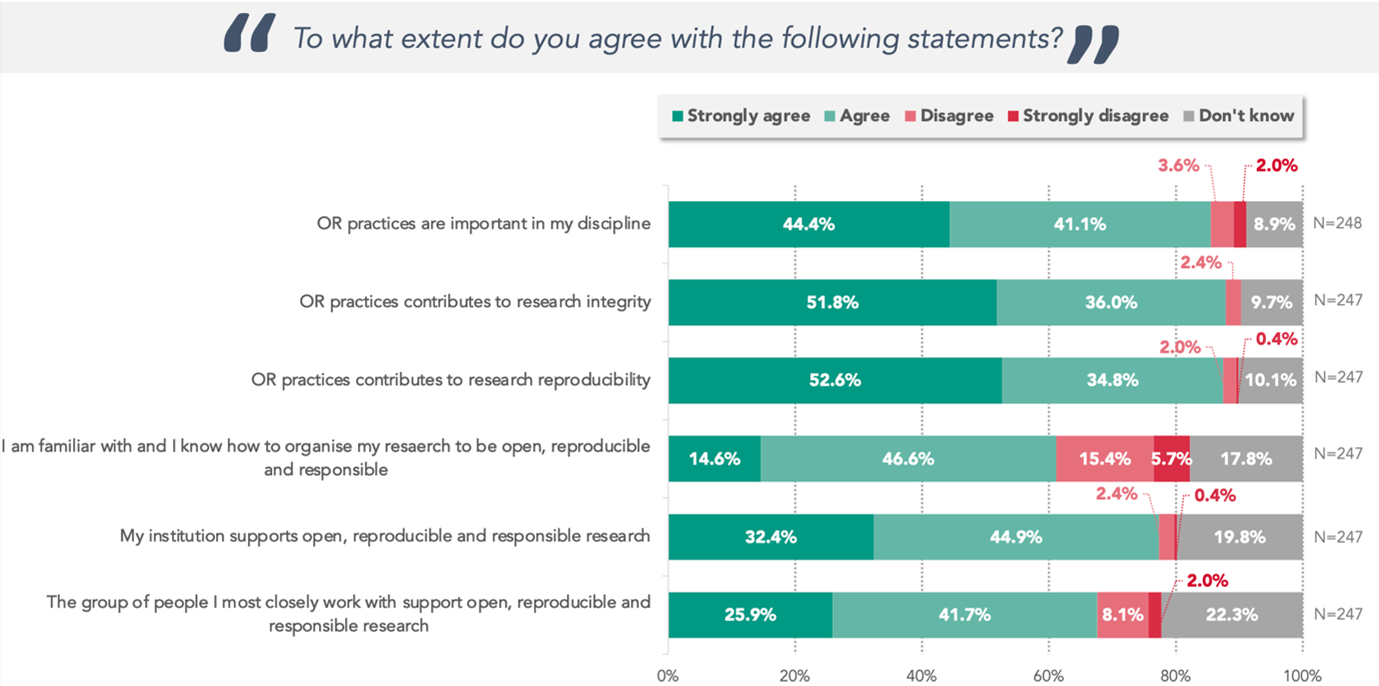Dr Marcello De Maria, one of the University’s Open Research Champions, writes about the current landscape of Open Research and Open Access, and shares some important insights emerging from the recent University-wide survey.

In April last year, I was appointed – with a bunch of other wonderful people – as one of the Open Research Champions at the University of Reading. Little did I know that I would have embarked on a fantastic journey, mapping for the first time ever our Open Research landscape with a University-wide survey. The survey was developed and administered as an interdisciplinary, cross-School collaboration between a number of Open Research Champions.
In principle, Open Research is better research, and the University of Reading Statement on Open Research is straightforward:
“Research conducted on open principles is more collaborative, transparent and reproducible, and makes its outputs more accessible to a greater number of people. This best serves the University’s mission to disseminate knowledge for maximum public benefit.”
In practice, research is still predominantly ‘closed by default’. Estimates from the EU Open Science Monitor show that in 2018, about two in three scientific publications across the EU, UK, and G8, were not Open Access. The UK is top of the class for the prevalence of Open Access publications. Nonetheless, around 48% of the research produced in the country remains hidden behind expansive paywalls and restrictive licenses, ultimately limiting the potential to convert research into public benefits.
The ‘big Open Research picture’ reflects the existence of various systemic issues affecting the creation and distribution of scientific knowledge, but it is also the result of more granular – local and context-specific – factors, influencing personal day-to-day decisions over the use of Open Research. When we were appointed as Open Research Champions, we suddenly realised that we knew very little about the perceptions, needs, incentives and barriers surrounding Open Research in our institution, and this is why we devised the Open Research survey.
With 376 completed questionnaires, the overwhelming participation in the survey is already a gauge of the importance of Open Research for students and staff, and the results suggest that Open Research is mainly associated with a positive perception: about 85% of respondents believe that Open Research is important in their discipline; around 90% see Open Research as contributing to research integrity and reproducibility; and over 77% appreciate the University’s efforts in promoting open and reproducible research (Figure 1). However, only 60% of respondents are confident that they would know how to conduct Open Research in practice, indicating the need to further build capacity and raise awareness around Open Research practices and principles.

Multiple benefits are simultaneously associated with Open Research. These include increased visibility, outreach, and public engagement; improved research transparency, integrity, and replicability; enhanced research quality; faster impact; and increased citations. At the same time, various barriers hinder the adoption of Open Research, with lack of information and training, limited funding, and insufficient time consistently being selected as the major challenges by the respondents.
The results provide indication of the existence of potentially significant differences within various groups of our academic community. The Net Promoter Score (NPS) – a metric often used to measure customer experience and satisfaction in the private sector, with a growing number of applications in the education and OR sector – is a good case. We measured the NPS for Open Research at the University level, as well as across different sub-populations. Although results measured across sub-samples come with higher margins of errors and should be interpreted with care, disaggregated figures suggest that experiences, needs, and perceptions associated with Open Research can vary considerably with gender, discipline, and career stage (Figure 2). Although the value of the NPS for the whole University (15.1) is greater than zero – which denotes a positive attitude towards Open Research – and for some subgroups is even higher than the average University score, results also reveal that some segments of our academic community – such as students, business disciplines, and women – have a negative or less optimistic perception of Open Research.

While we continue to delve into the wealth of information that we have gathered, there are already some important insights emerging from the Open Research survey. The University of Reading is a fertile ground for Open Research, but there is still an important knowledge gap. Responses from staff and students unveiled the need to further inform, train, and build capacity around Open Research practices and principles, but also provided a great deal of information to better calibrate the efforts for the promotion of Open Research around the specific needs of different groups within our academic community.
If you would like to learn more, check our presentation of the preliminary findings of the OR survey at the Open Research Forum in December 2021. We will soon publish open data from the survey on the UoR Research Data Archive, we are drafting a research paper, and we will present a final report to the University leadership Committee for Open Research and Research Integrity (CORRI) in March. To get in touch with the Open Research survey team, contribute, and ask questions: marcello.demaria@reading.ac.uk.
Dr Marcello De Maria is a Postdoctoral Researcher in the School of Agriculture, Policy and Development (SAPD) and an SAPD Open Research Champion.
